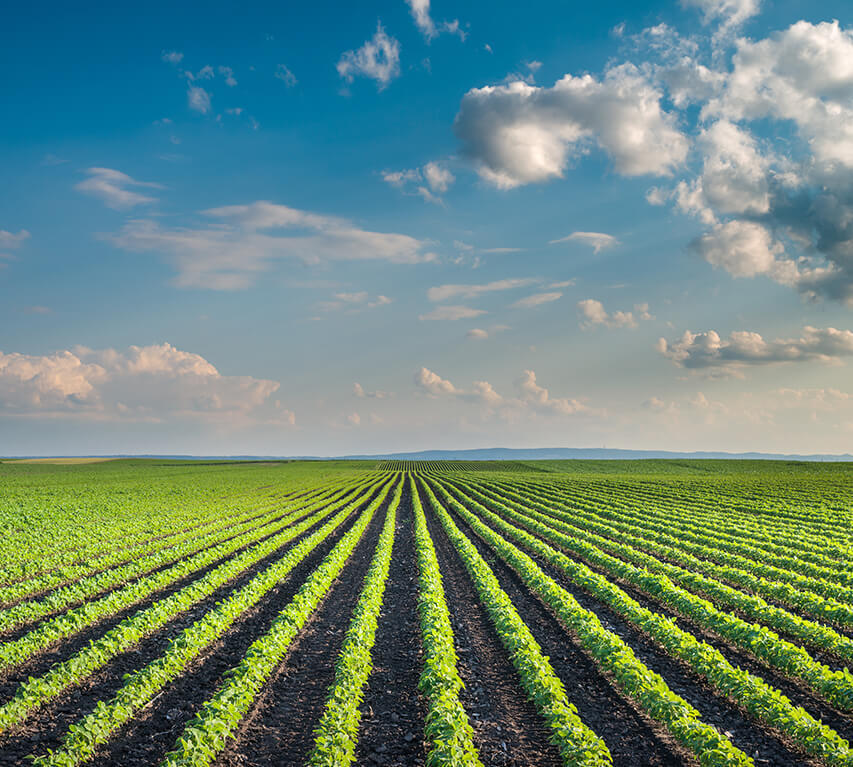The Food and Agriculture Organization (FAO) predicts that world agriculture will become increasingly more intensive. For the year 2050, the organization predicts that food consumption will increase by 70%, while agricultural land will increase by only 10%. In this scenario, greater food production per unit area will be needed.
Intensive agriculture can have negative effects on the environment - it can upset the balance, pollute ecosystems and cause harm to flora and fauna. One of the sources of pollution from intensive agriculture is the excessive use of fertilizers.
Fertilizer application pollutes the environment when:
- Nitrogen-oxide escapes into the atmosphere (N2O is a greenhouse gas).
- Nitrate leaches into the groundwater.
- Surface runoff water from the fields transports phosphorus, ammonia and nitrate to water reservoirs and rivers.
Excessive use of fertilizers also causes economic damage to growers. Until recent years fertilizer prices were relatively low. In this situation farmers applied a surplus of fertilizer to ensure high yields.
In the last 40 years, the amount of grain that was produced per kg of nitrogen fertilizer added was reduced by a factor of three. Some of the increase in the amount of nitrogen consumed for growing grains is due to the organic matter depletion in intensively cultivated fields, but it is also due to the fact that fertilizers are used excessively and inefficiently. This trend has changed in recent years due to increase in fertilizer prices, so farmers began to look for ways to save and reduce spending on fertilizers.
In countries where pollution from fertilizer may cause severe and immediate harm (For example, in the groundwater of the Netherlands and France, or in the coral reefs of Australia) the authorities are monitoring and implementing enforcement activities to control the amounts of fertilizer that is released into the environment. In many other places the authorities together with farmers are trying to set up procedures of "best management practices" for fertilization to minimize damage to the environment, taking into account the economic needs of farmers and the ability of fertilizer manufacturers to comply with regulations.
Most of the procedures are based on the "4R" rules of the International Plant Nutrition Institute (IPNI): "Right fertilizer source, at the Right rate, at the Right time, with the Right placement". These procedures are now only a recommendation, but as the demand from the public and consumers continues to grow (For example, supermarket chains that will commit themselves to provide goods that comply with environmental standards) more and more farmers will adopt them. According to the growing demand for fertilizers that are suitable for the "best management practices", fertilizer companies began to develop new high-efficiency fertilizers.

Two main fertilizer groups were developed:
-
Soluble fertilizers with special nutrients composition - special fertilizers that were adjusted specially for specific crops. In most cases they can be applied through irrigation water (fertigation). Fertigation enables the application of the fertilizer according to the best management practice method rules: To give the appropriate fertilizer for each stage of growth, to control the fertilizer quantity inserted in the irrigation water, schedule the application according to the plants’ needs and to carry the dissolved fertilizer with the irrigation water to the irrigation wetting zone where the most active roots are found. In this method the plant absorption efficiency is high. Fertigation systems are spreading fast in all areas where irrigation is developing.
-
Controlled-release fertilizers - Fertilizers coated with a plastic material (polymer) that releases the fertilizer to the environment at a known rate, depending on the soil temperature. The composition of the fertilizer in the polymer can be changed to suit the specific plants’ requirements. By changing the thickness of the polymer it is possible to determine the duration and the release rate of the fertilizer discharge and to plan the fertilizer application to match to the absorption rate of plants to prevent discharge into the environment. Use of controlled release fertilizer is developing rapidly in places where standards of emission fertilizers to the environment is strict or in places that lack irrigation systems.
At present, the specialty fertilizers are more expensive than the regular fertilizers. Because the high efficiency of the specialty fertilizers it is possible to use smaller quantities (compared to the regular fertilizers) and this offsets the difference in cost.
Studies have shown that in developed countries that control the damage caused to the environment and where farmers have the means to adopt new technologies, the fertilizer use efficiency has increased in recent years, contrary to the trend in less developed countries. This improvement of about 35%, reflects the immediate potential to prevent over-fertilization and pollution. It is hypothesized that the introduction of new technologies will bring even better results and a reduction in the consumption of fertilizers for grain production by 50%.
Figure 1 shows the increase of efficiency of nitrogen application in corn in the U.S. from a level of 43 kg grain per kg. Nitrogen applied in the 70's to 59 kg grain per kg N in 2002.
Fig 1. Corn nitrogen fertilizer application efficiency in the U.S. From: Fixen and West, 2002



